Flowering Plum
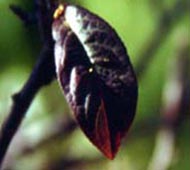
Leaf Characteristics
- broad, flat leaves
- simple leaves
- not lobed
- fine, double teeth
- all teeth same size
- shorter stem
- all side veins same length
- leaves long, not narrow
- veins curved
- less than 5" long
- stem less than 1/3 length of leaf
- long tip, small veins dense
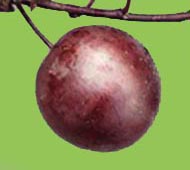
Fruit Characteristics
- other fruit (not cone, winged, acorn, or in pod or capsule)
- without husk or capsules
- loose, not packed tightly together
- fruit with large pit
- whole fruit larger than 1 inch
- fruit blue or red at maturity
This group of flowering trees includes a number of species, both native and introduced, as well as many varieties and hybrids. The native trees grow in moist soils of valleys and low upland slopes. Trees that have escaped from cultivation often are found along roadsides and fencerows. The Garden Plum (Prunus domestica) is a native of Europe and western Asia. Its bark is gray and may be smooth or fissured. This is the common domesticated plum. Both French and British colonists introduced it to North America. The American Plum (Prunus Americana) has dark brown bark that is scaly. It is native to North America and is found throughout much of the eastern U.S., westward to Oklahoma, and northward to Montana and southeastern Saskatchewan. The American Plum grows throughout the state of Ohio. The Canada Plum (Prunus nigra) is a more northern tree of North America. It grows in southern Canada and the northern U.S. west to Illinois and Minnesota. In Ohio it is found in a few of the northern counties. Some varieties of these trees have been developed for their fruits, others for their flowers. People often eat the fruits fresh, and use them in making jellies and preserves.
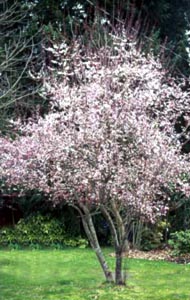 Tree Size
height 20' - 30'
diameter 6'' - 12''
Tree Size
height 20' - 30'
diameter 6'' - 12''
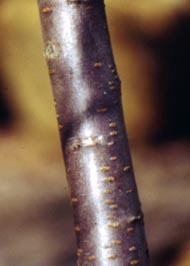 Bark
Bark
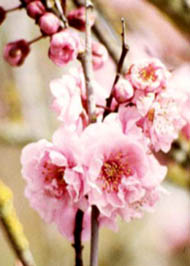 Flower
Flower 